#hotrod magazine
Explore tagged Tumblr posts
Text

Hotrod Show World Magazine (1977)
7 notes
·
View notes
Text
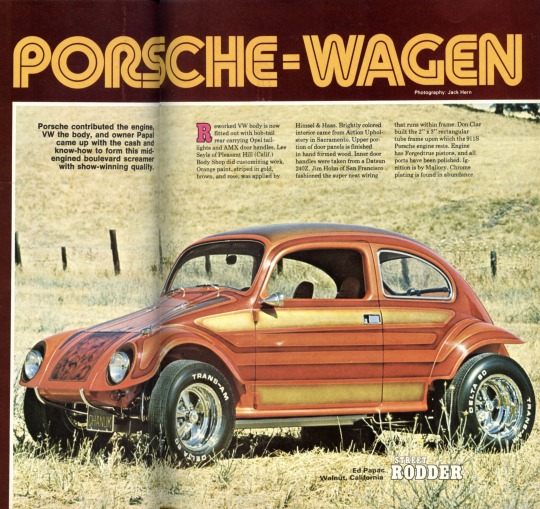
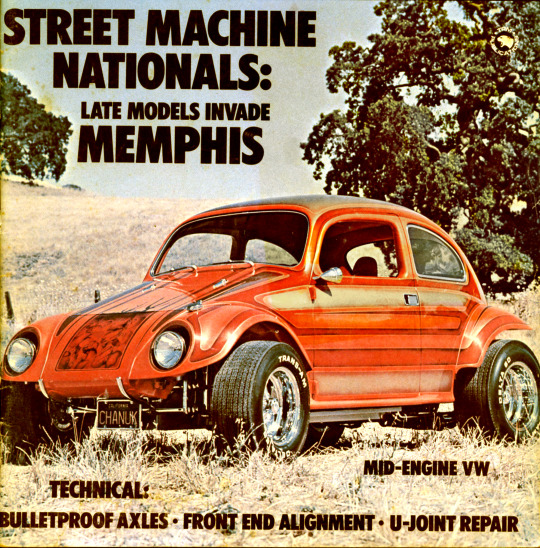
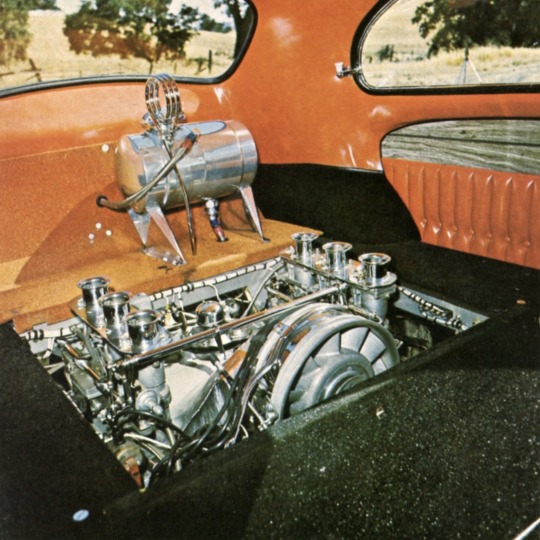
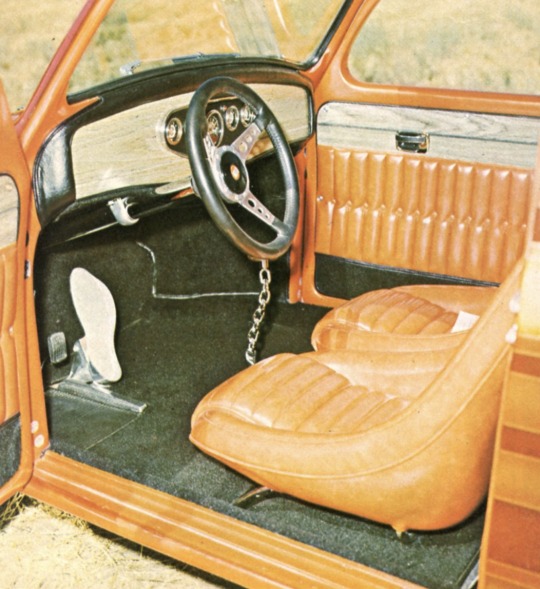

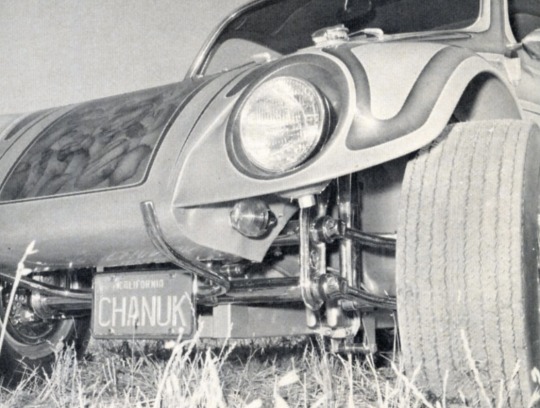
The Porsche 911 powered VW Beetle Hot Rod: The Porsche Wagen.
While a 911 engine swapped Beetle might be pretty common for 2023, in 1973, it was unheard of. Mad man Ed Papac’s crazy build features the body of a VW Beetle, engine from a 911S, and brakes from a Porsche Carrera. A stock Beetle in 1973 only had 58 horsepower but with this engine swap it would bump it up to 190 horsepower. Combine that with a pretty much gutted Beetle and this thing might actually be faster than the 911S that the engine came from. The cherry on top though is this insanely detailed 70’s bright orange hot rod paint job.
Scans from Street Rodder November 1973.
#porschewagen#porsche#vw#vwbeetle#beetle#porsche911#porsche911s#hotrod#streetrod#customcar#magazine#scans#70s#volkswagenbeetle#carchived#volkswagen#cars#archive#customcars#burntoutclutch
7 notes
·
View notes
Photo

Newest addition to the fleet. 1972 VW super beetle. . . Korymcnail.com #denver #colorado #colorado_creative #coloradolife #milehighcity #pentax #k3iii #ricoh #classic #cars #hotrod #pinup #magazine #instagood #photooftheday #follow #travel #instadaily #fun #friends #adventurephotography #traveladventures #photography #photographylovers #photographysouls #photographyeveryday #mcnailphotography #vw #beetle #superbeetle (at Aurora, Colorado) https://www.instagram.com/p/CoX2uvYJeJm/?igshid=NGJjMDIxMWI=
#denver#colorado#colorado_creative#coloradolife#milehighcity#pentax#k3iii#ricoh#classic#cars#hotrod#pinup#magazine#instagood#photooftheday#follow#travel#instadaily#fun#friends#adventurephotography#traveladventures#photography#photographylovers#photographysouls#photographyeveryday#mcnailphotography#vw#beetle#superbeetle
15 notes
·
View notes
Photo
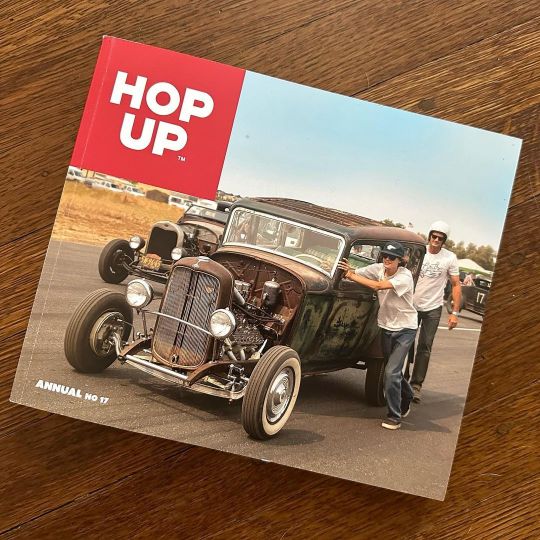
Every time I see my work in print I’m proud, excited and quite honored that both the magazine and the people that I photograph trust me enough to share my work. I do truly love this stuff and I am blessed to be able to photograph and tell stories about people and cars that inspire me. . I am honored to be a part of the HopUp annual No17 with a story about Holly and her passion and love for her Model A build that she worked so hard to bring to life for Bonneville–and succeeded incredibly. . A huge thank you to HopUp Magazine for all of the work and dedication to keep this legendary publication alive–a near impossible feat in todays instant-gratification, digital marketplace. I am proud to be able to work with you. . A huge than you to Holly for trusting me to tell her story and let me tag along on this very memorable adventure. . A huge than you to all of you who follow along, comment and send encouraging messages as I continue to do what I love. Please, take the time to engage with these remaining magazines and share just a small portion of your very hard earned money to subscribe and support these dedicated people who make these publications possible. We appreciate you. . #hotrod #hotrodculture #speed #speedculture #hopup #hopupmagazine #print #magazine #photography #monochrome #blackandwhite #nikon #scottphotoco #carsofinstagram www.ScottPhoto.co (not .com) ©2023 ALL RIGHTS RESERVED (at Bonneville Salt Flats) https://www.instagram.com/p/CoXyBkRPa2v/?igshid=NGJjMDIxMWI=
#hotrod#hotrodculture#speed#speedculture#hopup#hopupmagazine#print#magazine#photography#monochrome#blackandwhite#nikon#scottphotoco#carsofinstagram
3 notes
·
View notes
Text

A pair of perfect 1950s Ford Popular hotrods at the June Coffee and Chrome Collective at Impney Estate, Droitwich. Report from that meeting in the July issue of Classic and Competition Car magazine. Free to read at www.classcompcar.com
#Coffee and Chrome#Footman James Coffee and Chrome Collective#Coffee and Chrome Collective#Ford#FordPopular#popular#Hot Rod#Modified Car#Cra#Cars#Classic Cars#British Cars#Classic#British#Droitwich#Impney Estate#Chateau Impney
24 notes
·
View notes
Note
Hi bestie! I hope you had a good Halloween :3
I would like to know more about HotRod, and Spaz.. like do they have jobs? Music taste? Sibling dynamic? Fashion wear? Favorite shows? Just anything really ^^
BOY DO I HAVE SOME INFO FOR YOU BUDDY!!!
Spaz and HotRod are quite close as siblings!!
Spaz is 29, being her older brother while shes currently 25
Theres a big part of HotRod's story I can't put here as I plan to make a post about it specifically <3
Spaz-
Spaz got his name from Greaser, specifically when he took notice of the tentacles of the parasite twitching and spazzing as it grew more awake after birth
Spaz has a parasite, like most greaserfresh fankids
He IS the parasite, but to better understand will be addressed as "the parasite"
When he was born he was mostly a parasite, while yes he did have his normal skeleton body, and his consciousness was present in the parasite, aka True Spaz if you want to call it that <3
The parasite took up the entirety of his ribcage when he was born, enveloping his soul, his skeleton body being unresponsive till it grew enough for the parasite to move to his skull! It wasn't bad or anything, the body was usually limp but they knew he was fine
He was also born without emotions, just like his father, making it difficult to understand his needs. Yet he eventually grew into having them once he was able to speak with proper words.
He sometimes switches back to that state of no present emotions at short intervals, at complete random, and usually only happens from a few minutes to an hour
FunFact: His design was inspired by Max, Son of Goofy and the main character in the Goofy Movie & Extremely Goofy Movie
Spaz is more like their father Greaser, flirting with others to simply get into their pants and have a good time, with no real feelings behind it. Usually, he's off at a bar when he's out of the house.
While he's more introverted, alcohol and weed pull him out of his comfort zone, he has a bit of a reputation, good or bad depending on who you talk to.
He always listens to music, usually rock and roll or heavy metal, and tends to read magazines as he does. Spaz does not have an ecto tongue like many, the parasite sitting lower in his skull and taking up the place of his tongues with its tentacles, making his tastebuds much more sensitive, which also leads to lower tolerance
HotRod-
HotRod is a well-known baseball player, number 12 of The Sparks!! She's been playing since she was a child, working restlessly to build up the skill she has now as a star player ever since she first picked up her dad's bat one day
HotRod was the problem child everyone loved, getting into trouble for the fun of it, and was greatly encouraged to explore the multiverse the moment she was old enough!
She has an ex-boyfriend named Jeffery, who she met in Underfell when she was a teenager, a typical bad boy, he really only dated her because he saw her as a trophy, especially with the strength she had.
*cough cough* This will be explored more in a different post, but HotRod has 12 LV, making her the strongest in her family in LV
HotRod experiences LV spikes, also known as "magic overload syndrome" which occurs due to gaining LV or not expelling it in everyday life, whether it's working out, fighting, etc. Its only more common to happen to those with above 10 LV, such as Dust, or Killer for example.
If she doesn't take care of those spikes, she can get violent, high risk of attacking someone, and an inability to control her emotions. And not just that, but it also makes her run HOT, you could almost see the steam rising from her hair. Her magic would crackle, she'd be constantly irritated, jittery and out of control if gone to far And one of the more key factors of LV spikes she has, is her magic lighting up around her joints, sparkling and dripping with liquid magic like lava.
If not dealt with it can deal physical damage, but thankfully shes been able to work through it.
She has the ability to summon her bat at will, its her basic attack if she isn't engaged in hand to hand combat. She also has the ability to focus her magic into her bat, to hit harder, to cause serious damage, and send people flying depending on the intent she has in the moment of using it.
#asks#radicalrambles#undertale au#undertaleau#utmv oc#utmv#greaserfresh#freshgrease#greaserfresh kid#fresh grease kid#greaserfreshspaz#greaserfresh HotRod#undertale au fankid#utmv fankid#freshgrease kid#undertale
14 notes
·
View notes
Text

Borrowed from Walker Vintage Parts FB;
“ ‘The World’s Fastest Hot Rod’ - August 1949 issue of Hotrod Magazine featuring a P-38 Belly Tank built by Bill Burke & Don Francisco - Named Burple, this tanker set many land speed records in the late 40’s powered by a 1942 Mercury Flathead - Set a one way speed record when it ran 164.83 mph at El Mirage in June 1949 while driven by Bill Phy - Currently owned by Bobby Green of Old Crow Speed Shop -“
15 notes
·
View notes
Photo
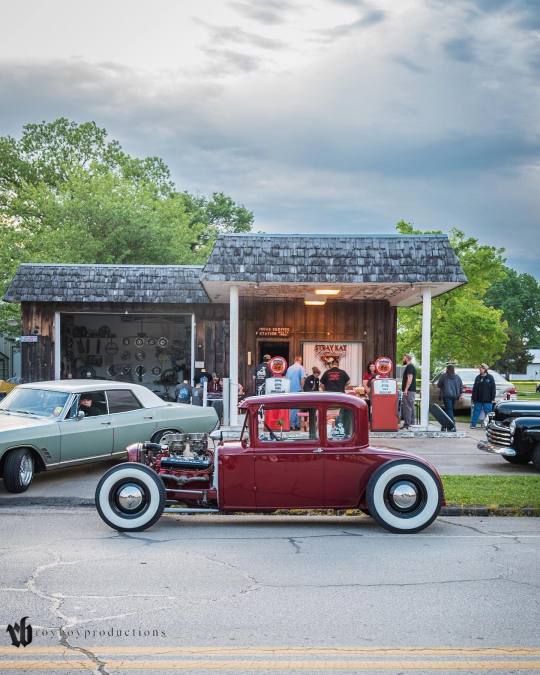
This weekend is the #StrayKat500 in Dewey, OK! This is one of my favorite weekends each year. This Model A belongs to my buddy Krobe and was the first car that I ever shot for a magazine back in 2011. #royboy #carsofinstagram #carsofIG #CarsofInsta #hotrod #kustom #custom #kustomkulture #hamb #hopup #hopuplive #hotrods #oldschool #oldschoolhotrods #hotrodlife #buildcoolshit #driveyourshit #customs #customculture #DoCoolShit
77 notes
·
View notes
Note
Saw your magazine covers, and it’s now my headcanon that at some point during the war, Vogue magazine somehow wrangles mirage, Soundwave, and hotrod together to do a photoshoot in their armors
Ha ABSOLUTELY
Probably during the times where both sides have to actually engage in diplomacy/debate over things like Demilitarized Zones and NGO/Aid Corridors.
23 notes
·
View notes
Text

“This Is The Beat Generation” by John Clellon Holmes
The New York Times Magazine, November 16, 1952
Several months ago, a national magazine ran a story under the heading ‘Youth’ and the subhead ‘Mother Is Bugged At Me.’ It concerned an eighteen-year-old California girl who had been picked up for smoking marijuana and wanted to talk about it. While a reporter took down her ideas in the uptempo language of ‘tea,’ someone snapped a picture. In view of her contention that she was part of a whole new culture where one out of every five people you meet is a user, it was an arresting photograph. In the pale, attentive face, with its soft eyes and intelligent mouth, there was no hint of corruption. It was a face which could only be deemed criminal through an enormous effort of reighteousness. Its only complaint seemed to be: ‘Why don’t people leave us alone?’ It was the face of a beat generation.
That clean young face has been making the newspapers steadily since the war. Standing before a judge in a Bronx courthouse, being arraigned for stealing a car, it looked up into the camera with curious laughter and no guilt. The same face, with a more serious bent, stared from the pages of Life magazine, representing a graduating class of ex-GI’s, and said that as it believed small business to be dead, it intended to become a comfortable cog in the largest corporation it could find. A little younger, a little more bewildered, it was this same face that the photographers caught in Illinois when the first non-virgin club was uncovered. The young copywriter, leaning down the bar on Third Avenue, quietly drinking himself into relaxation, and the energetic hotrod driver of Los Angeles, who plays Russian Roulette with a jalopy, are separated only by a continent and a few years. They are the extremes. In between them fall the secretaries wondering whether to sleep with their boyfriends now or wait; the mechanic berring up with the guys and driving off to Detroit on a whim; the models studiously name-dropping at a cocktail party. But the face is the same. Bright, level, realistic, challenging.
Any attempt to label an entire generation is unrewarding, and yet the generation which went through the last war, or at least could get a drink easily once it was over, seems to possess a uniform, general quality which demands an adjective. It was John Kerouac, the author of a fine, neglected novel The Town and the City, who finally came up with it. It was several years ago, when the face was harder to recognize, but he has a sharp, sympathetic eye, and one day he said, “You know, this is really a beat generation.” The origins of the word “beat” are obscure, but the meaning is only too clear to most Americans. More than a mere weariness, it implies the feeling of having been used, of being raw. It involves a sort of nakedness of mind, and, ultimately, of soul; a feeling of being reduced to the bedrock of consciousness. In short, it means being undramatically pushed up against the wall of oneself. A man is beat whenever he goes for broke and wagers the sum of his resources on a single number; and the young generation has done that continually from early youth.
Its members have an instinctive individuality, needing no bohemianism or imposed eccentricity to express it. Brought up during the collective bad circumstances of a dreary depression, weaned during the collective uprooting of a global war, they distrust collectivity. But they have never been able to keep the world out of their dreams. The fancies of their childhood inhabited the half-light of Munich, the Nazi-Soviet pact, and the eventual blackout. Their adolescence was spent in a topsy-turvy world of war bonds, swing shifts, and troop movements. They grew to independent mind on beachheads, in gin mills and USO’s, in past-midnight arrivals and pre-dawn departures. Their brothers, husbands, fathers or boy friends turned up dead one day at the other end of a telegram. At the four trembling corners of the world, or in the home town invaded by factories or lonely servicemen, they had intimate experience with the nadir and the zenith of human conduct, and little time for much that came between. The peace they inherited was only as secure as the next headline. It was a cold peace. Their own lust for freedon, and the ability to live at a pace that kills (to which the war had adjusted them), led to black markets, bebop, narcotics, sexual promiscuity, hucksterism, and Jean-Paul Sartre. The beatness set in later.
It is a postwar generation, and, in a world which seems to mark its cycles by its wars, it is already being compared to that other postwar generation, which dubbed itself ‘lost’. The Roaring Twenties, and the generation that made them roar, are going through a sentimental revival, and the comparison is valuable. The Lost Generation was discovered in a roadster, laughing hysterically because nothing meant anything anymore. It migrated to Europe, unsure whether it was looking for the ‘orgiastic future’ or escaping from the ‘puritanical past.’ Its symbols were the flapper, the flask of bootleg whiskey, and an attitude of desparate frivolity best expressed by the line: ‘Tennis, anyone?’ It was caught up in the romance of disillusionment, until even that became an illusion. Every act in its drama of lostness was a tragic or ironic third act, and T.S. Eliot’s The Waste Land was more than the dead-end statement of a perceptive poet. The pervading atmosphere of that poem was an almost objectless sense of loss, through which the reader felt immediately that the cohesion of things had disappeared. It was, for an entire generation, an image which expressed, with dreadful accuracy, its own spiritual condition.
But the wild boys of today are not lost. Their flushed, often scoffing, always intent faces elude the word, and it would sound phony to them. For this generation lacks that eloquent air of bereavement which made so many of the exploits of the Lost Generation symbolic actions. Furthermore, the repeatedinventory of shattered ideals, and the laments about the mud in moral currents, which so obsessed the Lost Generation, do not concern young people today. They take these things frighteningly for granted. They were brought up in these ruins and no longer notice them. They drink to ‘come down’ or to ‘get high,’ not to illustrate anything. Their excursions into drugs or promiscuity come out of curiousity, not disillusionment.
Only the most bitter among them would call their reality a nightmare and protest that they have indeed lost something, the future. For ever since they were old enough to imagine one, that has been in jeapordy anyway. The absence of personal and social values is to them, not a revelation shaking the ground beneath them, but a problem demanding a day-to-day solution. How to live seems to them much more crucial than why. And it is precisely at this point that the copywriter and the hotrod driver meet and their identical beatness becomes significant, for, unlike the Lost Generation, which was occupied with the loss of faith, the Beat Generation is becoming more and more occupied with the need for it. As such, it is a disturbing illustration of Voltaire’s reliable old joke: ‘If there were no God, it would be necessary to invent him.’ Not content to bemoan his absence, they are busily and haphazardly inventing totems for him on all sides.
For the giggling nihilist, eating up the highway at ninety miles an hour and steering with his feet, is no Harry Crosby, the poet of the Lost Generation who planned to fly his plane into the sun one day because he could no longer accept the modern world. On the contrary, the hotrod driver invites death only to outwit it. He is affirming the life within him in the only way he knows how, at the extreme. The eager-faced girl, picked up on a dope charge, is not one of those ‘women and girls carried screaming with drink or drugs from public places,’ of whom Fitzgerald wrote. Instead, with persuasive seriousness, she describes the sense of community she has found in marijuana, which society never gave her. The copywriter, just as drunk by midnight as his Lost Generation counterpart, probably reads God and Man at Yale during his Sunday afternoon hangover. The difference is this almost exaggerated will to believe in something, if only in themselves. It is a will to believe, even in the face of an inability to do so in conventional terms. And that is bound to lead to excesses in one direction or another.
The shock that older people feel at the sight of this Beat Generation is, at its deepest level, not so much repugnance at the facts, as it is distress at the attitudes which move it. Though worried by this distress, they most often argue or legislate in terms of the facts rather than the attitudes. The newspaper reader, studying the eyes of young dope addicts, can only find an outlet for his horror and bewilderment in demands that passers be given the electric chair. Sociologists, with a more academic concern, are just as troubled by the legions of young men whose topmost ambition seems to be to find a secure birth in a monolithic corporation. Contemporary historians express mild surprise at the lack of organized movements, political, religous, or otherwise, among the young. The articles they write remind us that being one’s own boss and being a natural joiner are two of our most cherished national traits. Everywhere people with tidy moralities shake their heads and wonder what is happening to the younger generation.
Perhaps they have not noticed that, behind the excess on the one hand, and the conformity on the other, lies that wait-and-see detachment that results from having to fall back for support more on one’s capacity for human endurance than on one’s philosophy of life. Not that the Beat Generation is immune to ideas; they fascinate it. Its wars, both past and future, were and will be wars of ideas. It knows, however, that in the final, private moment of conflict a man is really fighting another man, and not an idea. And that the same goes for love. So it is a generation with a greater facility for entertaining ideas than for believing in them. But it is also the first generation in several centuries for which the act of faith has been an obsessive problem, quite aside from the reasons for having a particular faith or not having it. It exhibits on every side, and in a bewildering number of facets, a perfect craving to believe.
Though it is certainly a generation of extremes, including both the hipster and the radical young Republican in its ranks, it renders unto Caesar (i.e, society) what is Caesar’s and unto God what is God’s. For the wildest hipster, making a mystique of bop, drugs and the night life, there is no desire to shatter the ‘square’ society in which he lives, only to elude it. To get on a soapbox or write a manifesto would seem to him absurd. Looking at the normal world, where most everything is a ‘drag’ for him, he nevertheless says: ‘Well, that’s the Forest of Arden after all. And even it jumps if you look at it right.’ Equally, the young Republican, though often seeming to hold up Babbitt as his culture hero, is neither vulgar nor materialistic, as Babbitt was. He conforms because he believes it is socially practical, not necessarily virtuous. Both positions, however, are the result of more or less the same conviction — namely that the valueless abyss of modern life is unbearable.
For beneath the excess and the conformity, there is something other than detachment. There are the stirrings of a quest. What the hipster is looking for in his ‘coolness’ (withdrawal) or ‘flipness’ (ecstasy) is, after all, a feeling on somewhereness, not just another diversion. The young Republican feels that there is a point beyond which change becomes chaos, and what he wants is not simply privelege or wealth, but a stable position from which to operate. Both have had enough of homelessness, valuelessness, faithlessness.
The variety and the extremity of their solutions are only a final indication that for today’s young people there is not as yet a single external pivot around which they can, as a generation, group their observations and their aspirations. There is no single philosophy, no single party, no single attitude. The failure of most orthodox moral and social concepts to reflect fully the life they have known is probably the reason for this, but because of it each person becomes a walking, self-contained unit, compelled to meet, or at least endure, the problem of being young in a seemingly helpless world in his own way.
More than anything else, this is what is responsible for this generation’s reluctance to name itself, its reluctance to discuss itself as a group, sometimes its reluctance to be itself. For invented gods invariably disappoint those who worship them. Only the need for them goes on, and it is this need, exhausting one object after another, which projects the Beat Generation forward into the future and will one day deprive it of its beatness.
Dostoyevski wrote in the early 1880’s that ‘Young Russia is talking of nothing but the eternal questions now.’ With appropriate changes, something very like this is beginning to happen in America, in an American way; a re-evaluation of which the exploits and attitudes of this generation are only symptoms. No single comparison of one generation against another can accurately measure effects, but it seems obvious that a lost generation, occupied with disillusionment and trying to keep busy among the broken stones, is poetically moving, but not very dangerous. But a beat generation, driven by a desparate craving for belief and as yet unable to accept the moderations which are offered it, is quite another matter. Thirty years later, after all, the generation of which Dostoyevski wrote was meeting in cellars and making bombs.
This generation may make no bombs; it will probably be asked to drop some, and have some dropped on it, however, and this fact is never far from its mind. It is one of the pressures which created it and will play a large part in what will happen to it. There are those who believe that in generations such as this there is always the constant possibility of a great new moral idea, conceived in desparation, coming to life. Others note the self-indulgence, the waste, the apparent social irresponsibility, and disagree.
But its ability to keep its eyes open, and yet avoid cynicism; its ever-increasing conviction that the problem of modern life is essentially a spiritual problem; and that capacity for sudden wisdom which people who live hard and go far possess, are assets and bear watching. And, anyway, the clear, challenging faces are worth it.
Photo credit: Mellon Tytell.
5 notes
·
View notes
Text
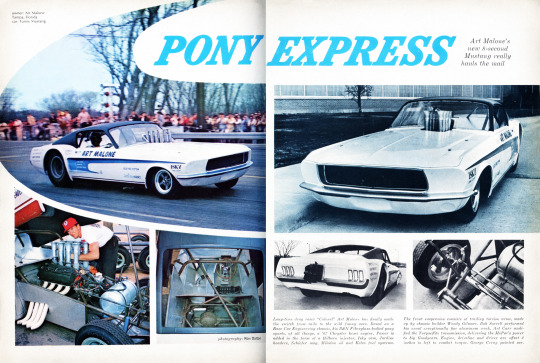
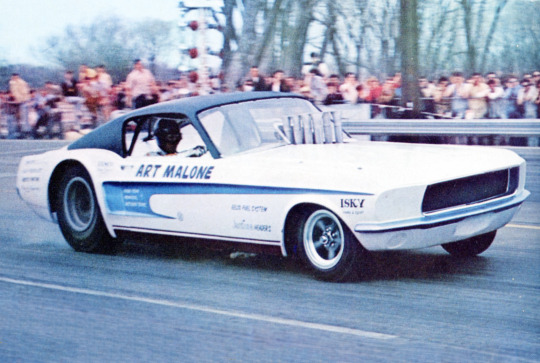

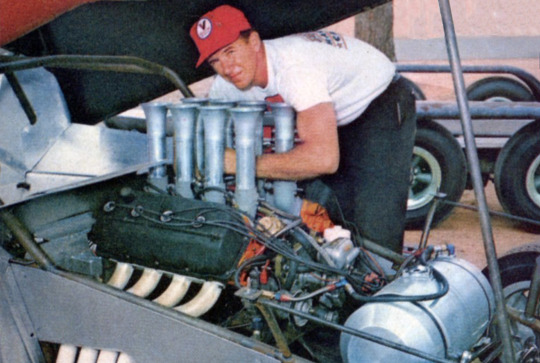
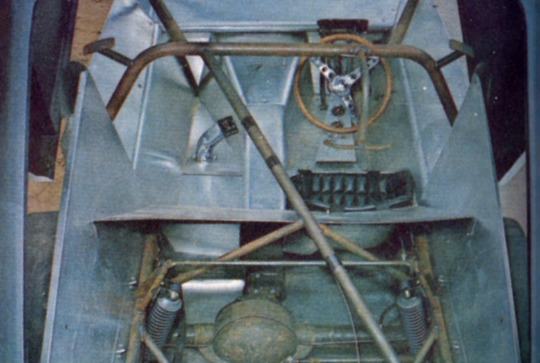


Pony Express: Art Malone’s Mustang Funny Car.
“Long-time drag racer ‘Colonel’ Art Malone has finally made the switch from rails to the wild funny cars. Based on a Race Car Engineering chassis, his B&N fiberglass-bodied pony sports, of all things, a ‘67 Chrysler hemi engine. Power is added in the form of a Hilborn injector, Isky cam, Jardine headers, Schiefer mag, Milodon oil, and Eelco fuel systems.
The front suspension consists of trailing torsion arms made by chassis builder Woody Gilmore. Bob Sorrell performed his usual exceptionally fine aluminum work. Art Carr modified the Torqueflite transmission, delivering the MoPar’s power to big Goodyears. Engine, driveline, and driver are offset 3 inches to left to combat torque. George Cerny painted car.”
Scans from Hot Rod Magazine August 1967.
#artmalone#funnycar#mustang#ponyexpress#dragracing#drag#artmaloneponyexpress#dragcar#60s#racing#artmalonemustang#dragracer#hotrod#hotrodder#hotrodmagazine#magazine#scans#scan#archive#cars#burntoutclutch
2 notes
·
View notes
Photo
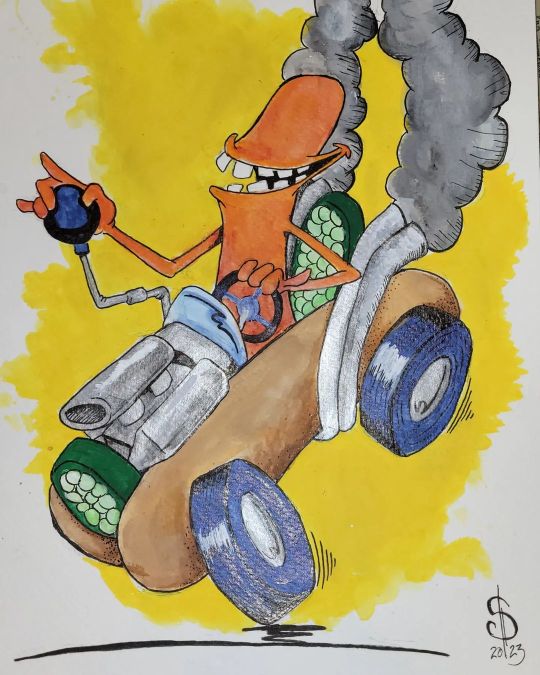
The Hot Dog Safari gearing up this March 23rd at the Dat Dog on Magazine! #SeanKDowney #DocGoblynne #hotdog #hotrod #painting https://www.instagram.com/p/CpySQwQv8Rt/?igshid=NGJjMDIxMWI=
9 notes
·
View notes
Photo

BYTE May 1998
Ways to speed up Java featured in this issue. The “sub-$1000 PCs” at the top of the cover were distinct from the “bargain hotrods” at the bottom, and the magazine was more enthusiastic about the second category.
5 notes
·
View notes
Photo
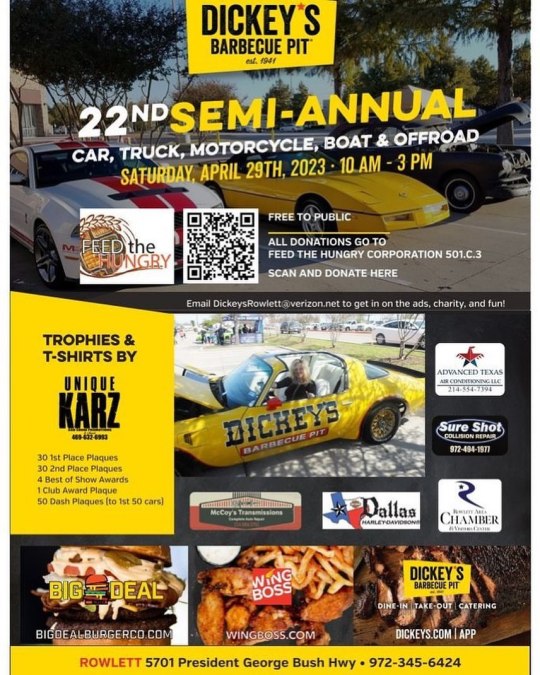
WANTED: HOTRODS, Motorcycles, OFFROAD vehicles, Trucks, Cars, BOATS Dickey's Barbecue Pit Rowlett Big Deal Burger Rowlett WingBoss Rowlett Bring your HOTROD! bring your OFFROAD! bring your TRUCK, bring your BIKE! bring your Appetite! bring your Family! Message us to get in on the charity, ads, and FUN! 22nd Semi-Annual Car Truck Motorcycle Boat and Offroad Show Dickey's Barbecue Pit Rowlett Saturday April 29th, 2023, 10:00 AM to 3:00 PM https://www.facebook.com/events/735737281347267/ Rain makeup day is May 6th $500 business card size ad to 190,000 homes on Ad Pages Magazine $300.00 Social Media Ad & Organic FaceBook, Twitter, InstaGram, LinkedIn, Google Business, Pinterest, NextDoor, Alignable, Referral Key, Snapchat, TikTok, Tumblr, Truth, et al. (250,000 reach) $300.00 3X3 AD on T-shirts Car Show $200.00 2X2 AD on T-shirts Car Show $100.00 1X1 AD on T-shirts Car Show $50.00 Award Sponsorship (with your name on the plaque & announcements a few times during the show) $50.00 Business booths FREE to the Public - all DONATIONS go to Feed The Hungry CorporationFeed The Hungry Corporation 501.c.3 Feed The Hungry Corporation is partnering with Dickey's Barbecue Pit Rowlett, Big Deal Burger, Rowlett WingBoss Rowlett, yourhouse4mycash.com, and The Catering Guy LLC to feed those in need and identify deeper needs in the community. The public can contribute at https://www.fthcorp.org/ or Venmo https://venmo.com/FeedTheHungry-Corporation email [email protected] 30 1st place 8x10 plaques 30 2nd place plaques 7x9 4 best of show awards 9x12 one club award plaques 9x12 50 dash plaques to the 1st 50 cars Dickey's Barbecue Pit 5701 President George Bush Highway #110 Rowlett, TX 75089 Catering Experts 972-345-6424 [email protected] #Catering #Barbecue #Restaurants #Marketing #Lunch #Smoking #Car_Show #Motorcycle #Truck #OFFroad #holiday #Dinner #hotrodhappenings #Babes #Hotrod #show #Corvette #Classic #Charity previous show: https://www.facebook.com/events/4968345166605059/ (at Dickey's Barbecue Pit Rowlett) https://www.instagram.com/p/CpnkGIPvSWx/?igshid=NGJjMDIxMWI=
#110#catering#barbecue#restaurants#marketing#lunch#smoking#car_show#motorcycle#truck#offroad#holiday#dinner#hotrodhappenings#babes#hotrod#show#corvette#classic#charity
2 notes
·
View notes
Link
0 notes
Text
Summer of 74 was the summer a new guy moved into the house across the alley where I lived. Young guy,25-28 years old, very buff and hip,drove an old duster,jacked up in the back with big tires and chrome craiger rims all around. It had shag carpet on the dash and back window ledge, a 8ball gear shifter knob and white dice hanging off the rear view mirror, but the real best part was the engine, it was loud and hotrod like I've only seen in magazines!! It was the best car in the neighborhood and I wanted to ride in it so bad,dreaming of driving it one day, maybe my downfall.
0 notes